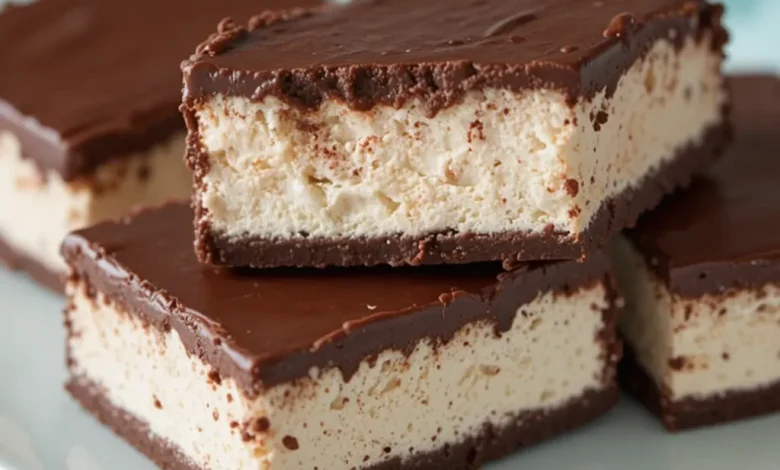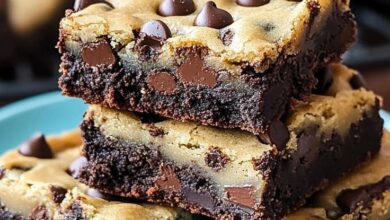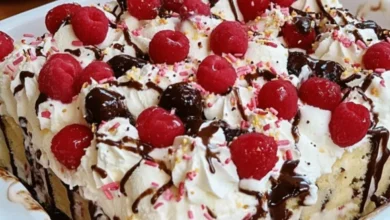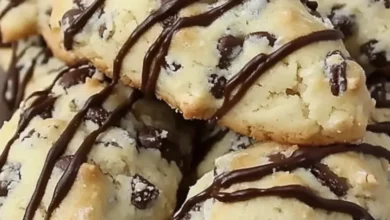The Ultimate Guide to Homemade Chocolate-Covered Ice Cream Bars

Why Homemade Beats Store-Bought Every Time
There’s something undeniably magical about a chocolate-covered ice cream bar. That satisfying crack as you bite through a shell of rich, dark chocolate, giving way to the cold, creamy ice cream within, is a universal sensation of joy. While the grocery store freezer aisle is packed with options, nothing compares to the artistry and flavor of a homemade version.
Creating your own chocolate-covered ice cream bars is more than a recipe; it’s a rewarding culinary project. You control the quality of every ingredient, avoid unwanted preservatives, and have the freedom to craft flavors that are uniquely yours. Imagine a bar made with fresh strawberry ice cream and a dark chocolate coating, or a decadent salted caramel core dipped in milk chocolate and rolled in toasted pecans. The possibilities are endless. This guide will walk you through every step, from creating the perfect ice cream base to mastering the chocolate dip, ensuring your homemade creations are not only delicious but also beautifully professional.
The Foundation: Ingredients for Success
Using high-quality ingredients is the secret to an extraordinary ice cream bar. Here’s what you’ll need for a classic vanilla bean and dark chocolate version.
For the Vanilla Ice Cream Base:
- 2 cups heavy cream (chilled)
- 1 cup whole milk (chilled)
- 3/4 cup granulated sugar
- 1 tablespoon pure vanilla extract or the seeds from 1 vanilla bean pod
- 1/4 teaspoon fine sea salt
For the Chocolate Coating:
- 12 ounces high-quality dark chocolate (chopped, or high-quality chocolate chips)
- 3 tablespoons refined coconut oil (this creates a crisp, shell-like coating that doesn’t get too hard)
Optional Toppings for Customization:
- Chopped nuts (peanuts, almonds, pistachios)
- Sprinkles
- Crushed cookies or pretzels
- Flaky sea salt
- Shredded coconut
- Freeze-dried fruit powder
Essential Equipment:
- Ice cream maker
- 8×4 inch loaf pan (or a similar sized container)
- Parchment paper
- Baking sheet
- Wooden popsicle sticks
- Small, deep bowl for dipping
- Instant-read thermometer (highly recommended)
The Art of Creation: Step-by-Step Instructions
Follow these steps carefully for a flawless result. The key to success is patience and keeping everything as cold as possible.
Step 1: Crafting the Ice Cream Base
- Combine Ingredients: In a large bowl, whisk together the chilled heavy cream, whole milk, granulated sugar, vanilla extract (or seeds), and salt. Whisk until the sugar is completely dissolved. Avoid over-whisking, as you don’t want to whip the cream.
- Chill the Mixture: For the best texture, cover the bowl and refrigerate the mixture for at least 1-2 hours. This ensures it’s perfectly cold before churning.
- Churn to Perfection: Pour the chilled mixture into your ice cream maker and churn according to the manufacturer’s instructions. This typically takes 20-30 minutes, until it reaches a soft-serve consistency.
Step 2: Molding and Freezing the Bars
- Prepare the Pan: Line your 8×4 inch loaf pan with parchment paper, leaving an overhang on two opposite sides. This will act as a sling to easily remove the frozen ice cream block.
- Transfer and Smooth: Pour the freshly churned ice cream into the prepared loaf pan. Use a spatula to spread it into an even layer and smooth the top.
- First Freeze: Place the pan in the freezer for about 1 hour, or until the top is just set enough to hold a popsicle stick upright.
- Insert Sticks: Remove the pan from the freezer. Carefully insert wooden popsicle sticks into the ice cream, spacing them evenly to create 6-8 bars. Push them about halfway into the block.
- Solidify Completely: Return the pan to the freezer for at least 4-6 hours, or preferably overnight. The ice cream must be completely solid and firm.
Step 3: Cutting the Bars
- Lift the Block: Using the parchment paper sling, lift the entire block of ice cream out of the loaf pan and place it on a cutting board.
- Cut with a Hot Knife: To get clean cuts, run a sharp knife under very hot water, wipe it dry, and then slice the block into individual bars. Repeat the heating and wiping process for each cut. This prevents the ice cream from cracking or melting unevenly.
- Flash Freeze: Place the cut bars on a parchment-lined baking sheet and return them to the freezer for at least 30-60 minutes. This is a critical step the bars must be frozen solid before they meet the chocolate.
Step 4: Mastering the Chocolate Coating
- Create the Coating: In a heatproof bowl set over a pot of gently simmering water (a double boiler), combine the chopped dark chocolate and coconut oil. Stir continuously until the mixture is completely smooth and fluid. Alternatively, you can melt it in 20-second bursts in the microwave, stirring thoroughly between each burst.
- Cool the Chocolate: Remove the bowl from the heat and let the chocolate cool slightly for 5-10 minutes. It should still be liquid but not so hot that it will instantly melt the ice cream bars. An instant-read thermometer is useful here; aim for a temperature of around 90-95°F (32-35°C).
- The Dip: Take one or two bars from the freezer at a time. Working quickly, hold a bar by the stick and dip it into the melted chocolate, swirling to ensure it’s completely coated.
- Add Toppings: Immediately after dipping, sprinkle with your desired toppings (like chopped nuts or sprinkles) before the chocolate sets.
- Set the Shell: Place the finished bar back onto the parchment-lined baking sheet. The chocolate will harden almost instantly upon contact with the frozen bar.
- Repeat: Continue this process with the remaining bars, working in small batches to keep them frozen.
Step 5: The Final Freeze and Serving
Once all bars are coated, return the entire baking sheet to the freezer for a final 15-minute freeze to ensure everything is perfectly set. For storage, place the bars in a single layer in an airtight container separated by parchment paper.
Pro Tips for Ice Cream Bar Mastery
- Prevent Ice Crystals: Press a piece of plastic wrap directly onto the surface of the ice cream before the first freeze.
- Flavor Variations: Infuse the cream base with citrus zest, espresso powder, or mint extract before churning. You can also swirl in ribbons of fudge, caramel, or fruit puree after churning.
- The Coating is Key: The coconut oil is non-negotiable for that classic, snappy shell. Without it, the chocolate will set into a thick, hard layer.
- Troubleshooting a Thick Coating: If your chocolate coating is too thick, gently re-warm it and add a touch more coconut oil to thin it out.
Conclusion: Your New Signature Dessert
Making homemade chocolate-covered ice cream bars is a delightful process that yields incredibly satisfying results. Beyond the superior taste and texture, it’s an experience a chance to slow down, create with your hands, and present a dessert made with care and creativity. Whether you stick to the classic recipe or embark on your own flavor adventures, these bars are sure to impress. So, embrace the project, gather your ingredients, and get ready to enjoy the most delicious and personalized frozen treat of your life. The perfect homemade ice cream bar is now within your reach.



